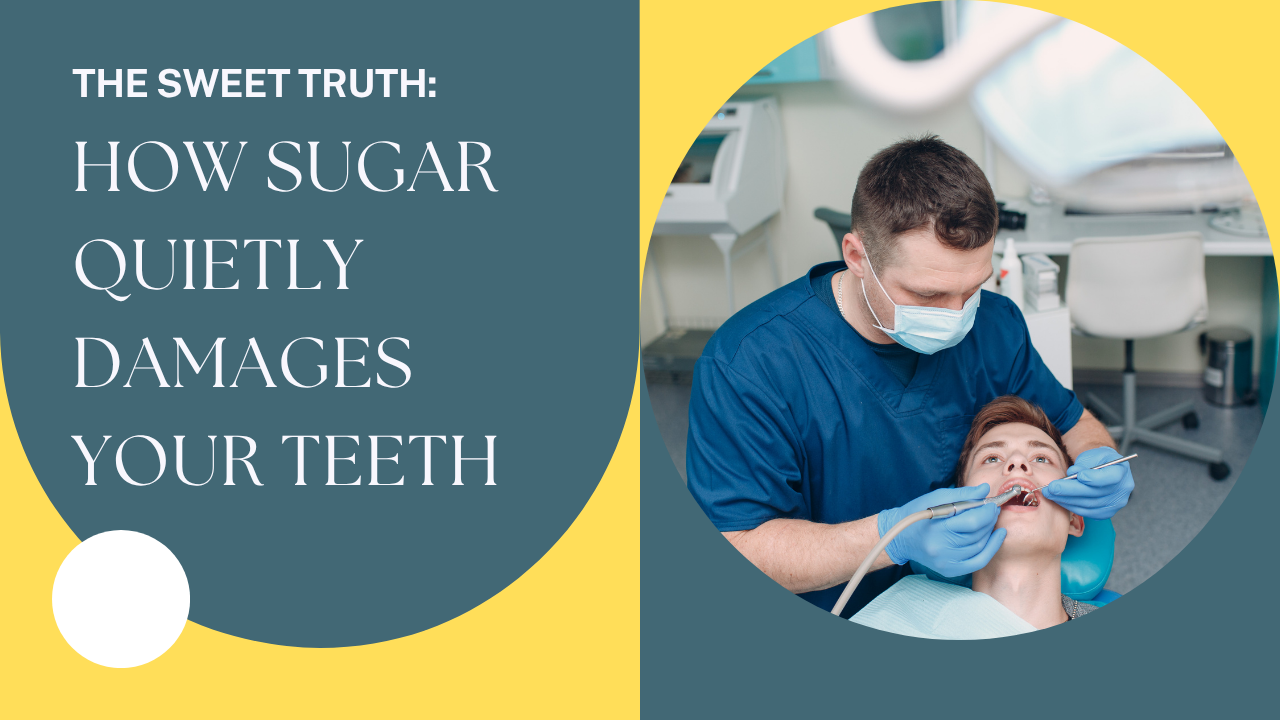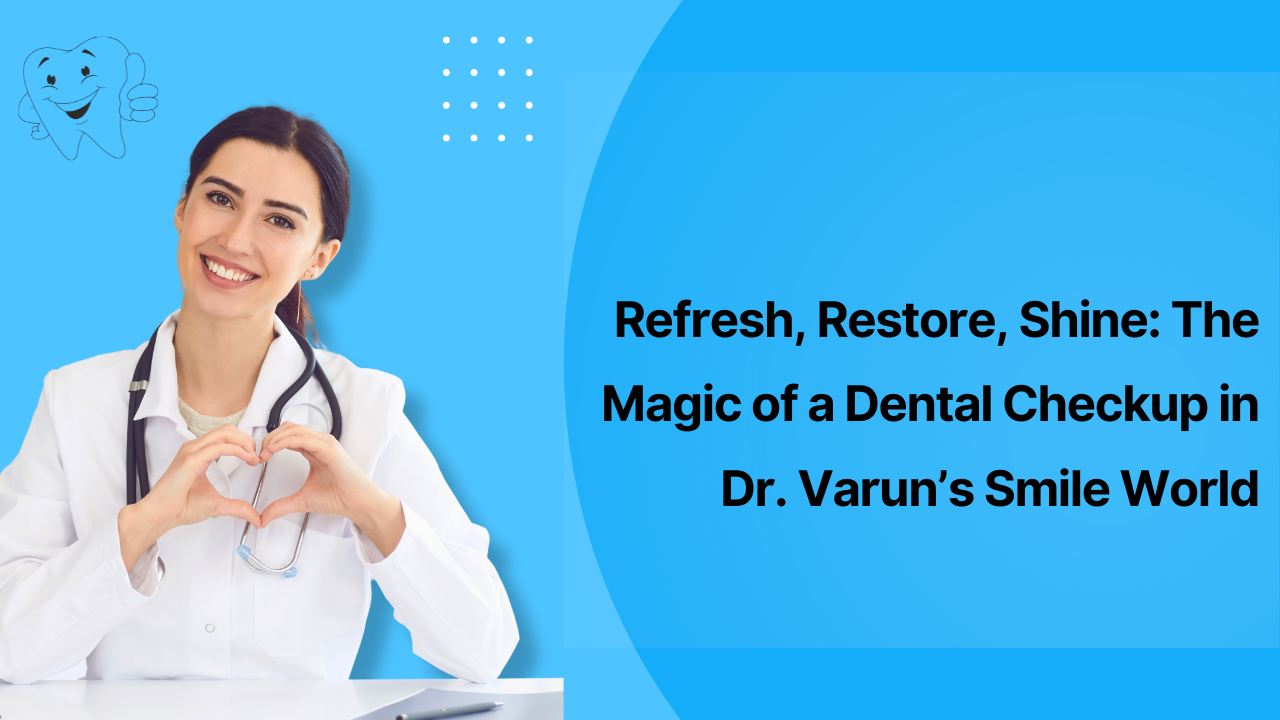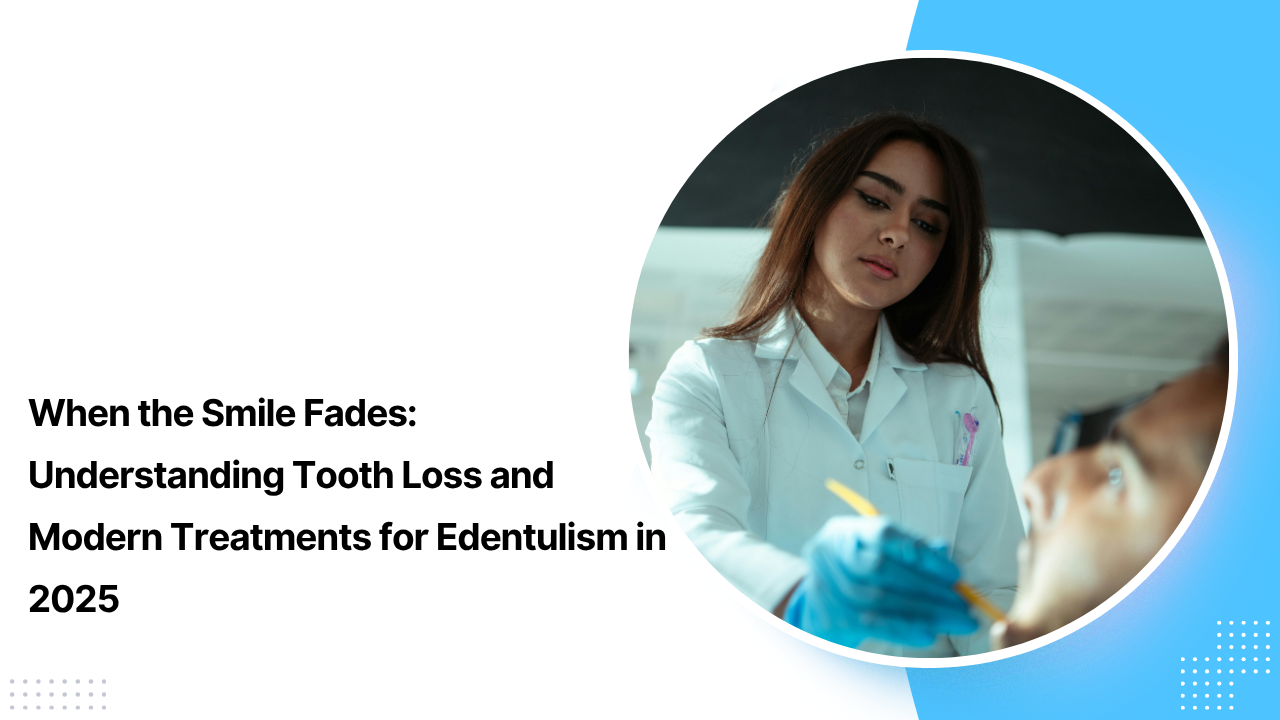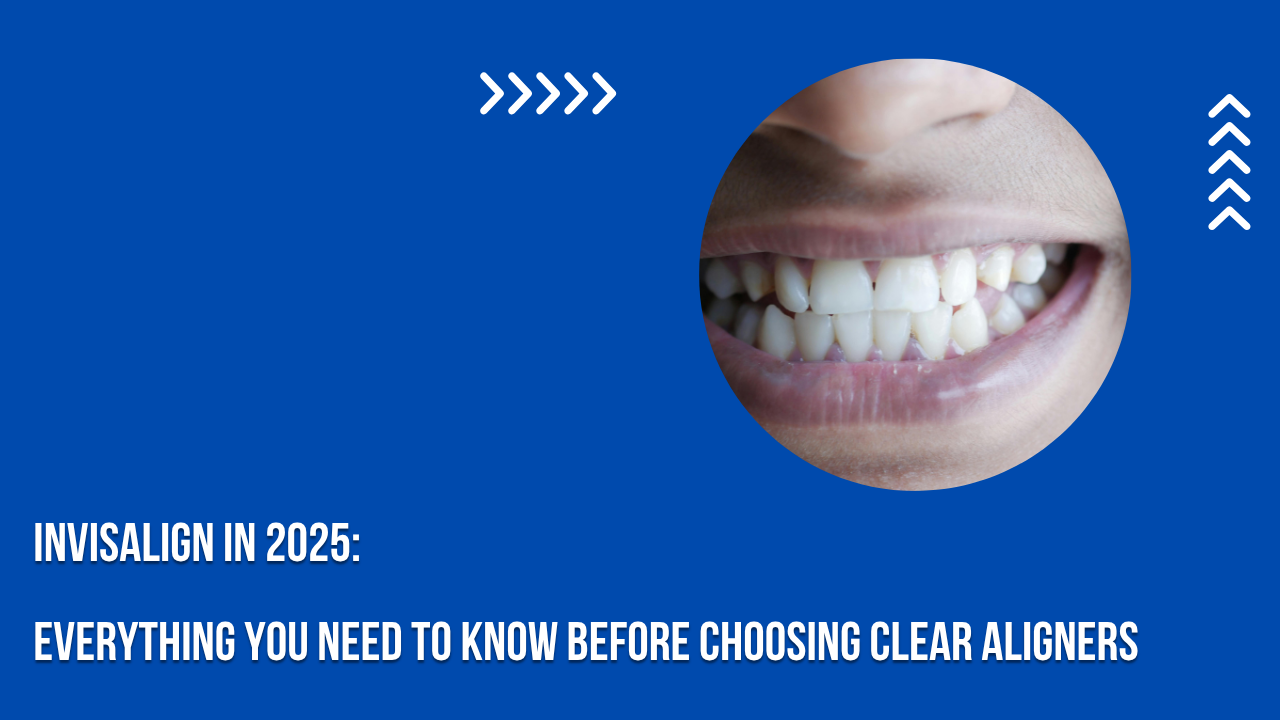There’s a certain comfort in sweet foods. Whether it’s a coffee sweetened with a sugar cube, a quick vending machine snack, or a dessert to celebrate, it feels familiar and almost harmless. However, each time you consume something sugary, a process occurs in your mouth that isn’t as innocent as it appears.
Sugar doesn’t just satisfy your sweet tooth; it actually drives the process that damages your teeth. This happens daily to people of all ages, often without their awareness.
This isn’t meant to frighten you into avoiding your favorite treats, but rather to help you understand how sugar affects your oral environment and how small, conscious changes can significantly protect your smile.
The Basics: Why Sugar Harms Your Teeth
Your mouth contains hundreds of types of bacteria—some good, some bad. The harmful bacteria thrive on sugar. When sugar enters your mouth, these bacteria consume it and produce acids as a result. These acids begin to attack the outer layer of your teeth, known as enamel.
Enamel erosion starts when these acids weaken and break down this protective layer. Once enamel is compromised, the softer dentin beneath becomes exposed, leading to issues like tooth sensitivity, discomfort while chewing, and noticeable tooth discoloration.
The Frequency Factor: It’s Not Just How Much Sugar You Consume
A common misconception is that only large amounts of sugar cause cavities. The real issue is that how often you consume sugar matters more than the amount.
If you sip sugary drinks throughout the day, your teeth face constant acid attacks. Even without consuming large quantities of sugar, repeated exposure gradually wears down your enamel. This is why frequent sugar intake is one of the biggest contributors to tooth decay.
Hidden Sugars: The Everyday Culprits You Might Be Ignoring
Many people are aware that sweets and soft drinks can harm teeth. However, sugars concealed in foods are widespread, even in items considered “healthy.”
| Item | Approximate Sugar per Serving |
| Flavored yogurt (150g) | 12–20g |
| Granola bar | 10–18g |
| Bottled smoothies | 18–30g |
| Packaged bread (2 slices) | 4–6g |
| Instant oatmeal packets | 10–15g |
| Salad dressings (2 tbsp) | 5–8g |
| Flavored water | 8–14g |
Ingredients like fructose, glucose syrup, corn syrup, and maltodextrin are all forms of added sugar that contribute to tooth decay.
The Domino Effect: How Sugar Triggers More Serious Dental Issues
Once enamel starts to wear away, it sets off a chain reaction:
– Cavities: Enamel breakdown results in permanent holes in teeth.
– Gum irritation: Sugar promotes plaque buildup, which inflames the gums.
– Tooth sensitivity: Thinning enamel brings nerves closer to the surface.
– Bad breath: Bacteria feed on sugar and produce unpleasant odors.
– Tooth discoloration: Exposed dentin causes a yellowish appearance.
– Tooth loss: Severe decay or gum disease can cause teeth to fall out or require extraction.
The Changing Food Landscape: Why 2025 Marks a Peak in Sugar-Related Challenges
Our food environment has evolved. In 2025, convenience dominates. Many processed snacks, bottled drinks, and even common breakfast items contain refined sugars or natural sweeteners that still damage teeth. With increased snacking and less structured meals, people unknowingly raise their risk of dental erosion and cavities. Plus, products labeled “no added sugar” or “natural” can be misleading, making it easy to assume they’re harmless when they’re not.
Effective Ways to Reduce Sugar’s Harm to Your Teeth
You don’t need to cut out sugar entirely. Here are some natural strategies to protect your teeth and maintain oral health without giving up all sweets:
1. Eat Sugary Foods with Meals
Consuming sweets alongside meals lessens acid effects because saliva production is higher during eating.
2. Rinse with Water After Eating
Drinking water helps wash away sugar and dilute acids in your mouth.
3. Use a Straw for Sugary Drinks
A straw minimizes direct contact between sugary beverages and your teeth.
4. Wait Before Brushing
Allow 30–60 minutes after eating acidic foods before brushing to avoid enamel erosion.
5. Chew Sugar-Free Gum Containing Xylitol
Xylitol neutralizes acid and boosts saliva flow, aiding tooth remineralization.
6. Brush and Floss Daily
Use fluoride toothpaste to strengthen enamel and remove plaque.
7. Read Food Labels for Hidden Sugars
Limit products with high added sugar content by checking total sugars per serving.
8. See Your Dentist Regularly
Routine check-ups and cleanings help catch and reverse early tooth decay or gum disease.
A Realistic Routine for Protecting Your Teeth
| Time | Action |
| Morning | Brush with fluoride toothpaste after breakfast |
| Mid-Morning | Rinse with water or chew xylitol gum after snacks |
| Lunch | Eat fiber-rich foods like raw veggies for mouth health |
| Afternoon | Avoid sugary tea or juices; stick to water |
| Evening | Limit post-dinner snacking |
| Night | Brush and floss before bed to remove sugar residues |
A Closing Thought on Sugar and Dental Health
The link between sugar and dental issues is well-known. However, in 2025, with processed foods prevalent and sugars hidden in many products, the risks have increased.
You don’t have to completely cut out sweets. Yet, being mindful of how frequently you consume sugar, the timing of your intake, and your dental care afterward can help safeguard your oral health over time.
Since small habits accumulate, maintaining a healthy smile is always valuable to protect.
Final Note: Safeguard Your Smile at Dr. Varun’s Smile World
At Dr. Varun’s Smile World, we prioritize prevention over treatment, particularly in oral health. Our skilled team provides customized dental care, routine examinations, and educational support to help you preserve a vibrant, healthy smile throughout your life. Whether you’re dealing with cavities, seeking nutritional advice, or simply aiming to maintain excellent dental health, we’re here to assist you at every stage.




